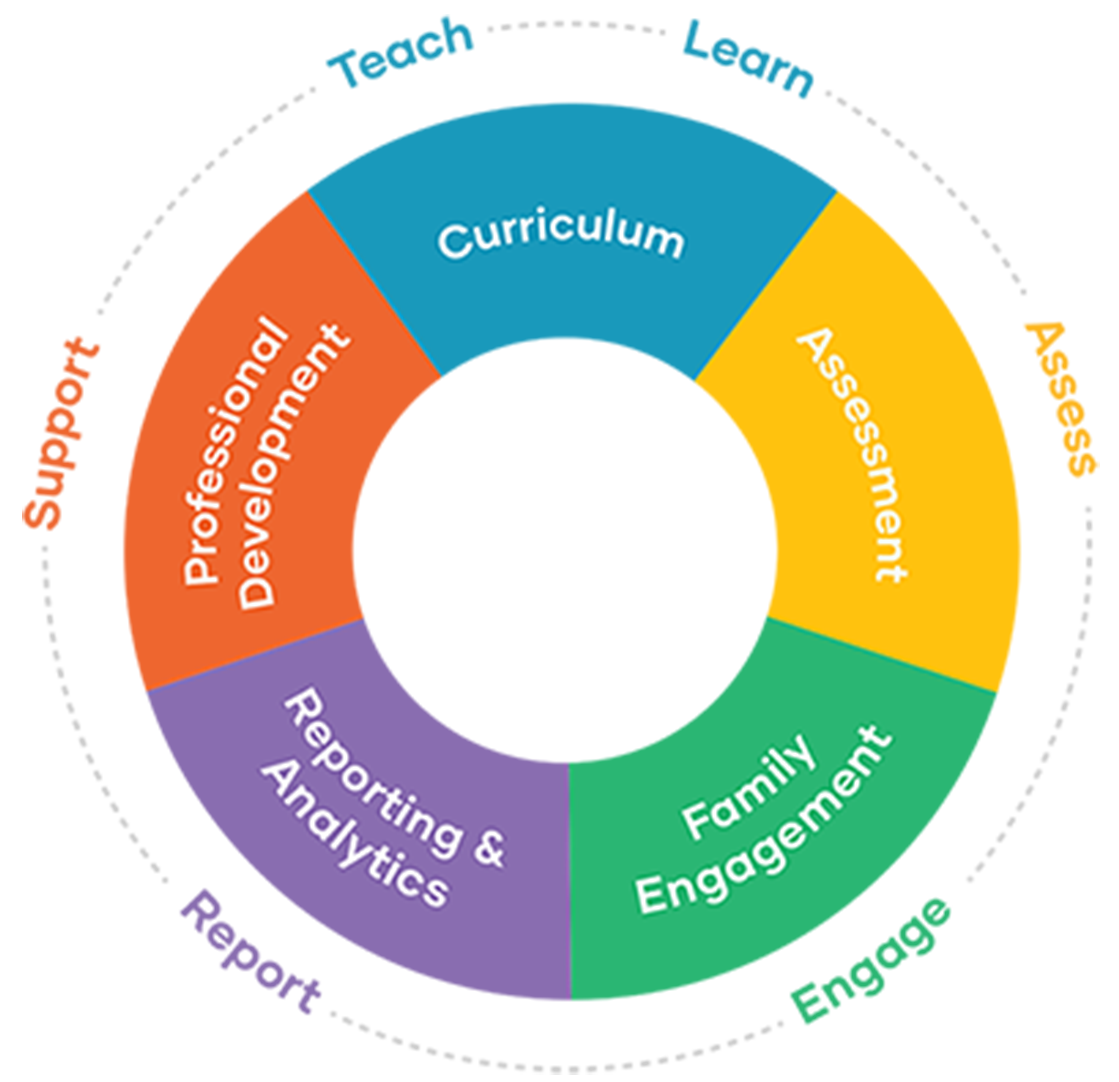
Creative curriculum
The Creative Curriculum® is a comprehensive, research-based curriculum that features exploration and discovery as a way of learning, enabling children to develop confidence, creativity, and lifelong critical thinking skills. It is designed to help educators at all levels of experience plan and implement a developmentally appropriate, content-rich program for children with all ages, diverse backgrounds and skill levels.
Blue Print curriculum
A literacy-focused curriculum and support system designed for preschool children ages 3, 4, and 5 years old. The program is designed to enhance existing classroom curricula by specifically focusing on improving children’s early literacy skills and knowledge. The program is designed to be implemented during the academic year and supplements the daily activities of the classroom teacher support and family involvement opportunities throughout the year.
The Assessment Cycle
Observing and collecting facts is the first of the four steps in the cycle. A teacher’s daily job involves continual observations of children. “There is always something new to learn about a child—even a child you think you know well.” When a teacher observes a child’s knowledge, skills, and behaviors and records these observations systematically, she discovers what is unique and special about that child; this forms the basis for building a positive relationship in which teachers can plan experiences that allow the child to flourish.
Analyzing and responding, the second step in the assessment cycle, involves using the information gained during the first step to respond to each child and scaffold his/her learning appropriately. Knowing what each child can do in relation to the objectives for development and learning helps a teacher decide how much support an individual child needs, as well as whether the classroom routines and rules are working for the group as a whole. Teachers use this knowledge to help decide when, what, and how to teach.
Evaluating, the third step, means deciding which indicator of an objective best describes the child’s knowledge, skills and behaviors. By consistently analyzing and evaluating their observation notes and portfolio samples, teachers are able to determine each child’s level of development in relation to each objective. Summarizing, planning, and communicating comprise the final step of the assessment cycle. Teachers summarize what they know about each child, develop plans for individual children and the group, and then communicate their findings to families and administrators.
Teaching Strategies GOLD – Formative Assessment for Early Learning
Whole child Approach
At LPV, we focus on the whole child. The whole child approach to learning is the most developmentally appropriate way to educate children. Why? Because a whole-child approach fosters all areas of children’s development and learning-from social-emotional and cognitive skills to literacy , math, and science understanding- and is a powerful approach as preschool children transition to kindergarten.
With Creative Curriculum, children are immersed in learning through purposeful play-based experiences on topics they’re familiar with from their everyday lives. Children find opportunities for rigorous skill development like counting, measurement, and language comprehension while also developing positive relationships, gross-motor skills, and problem solving abilities.
